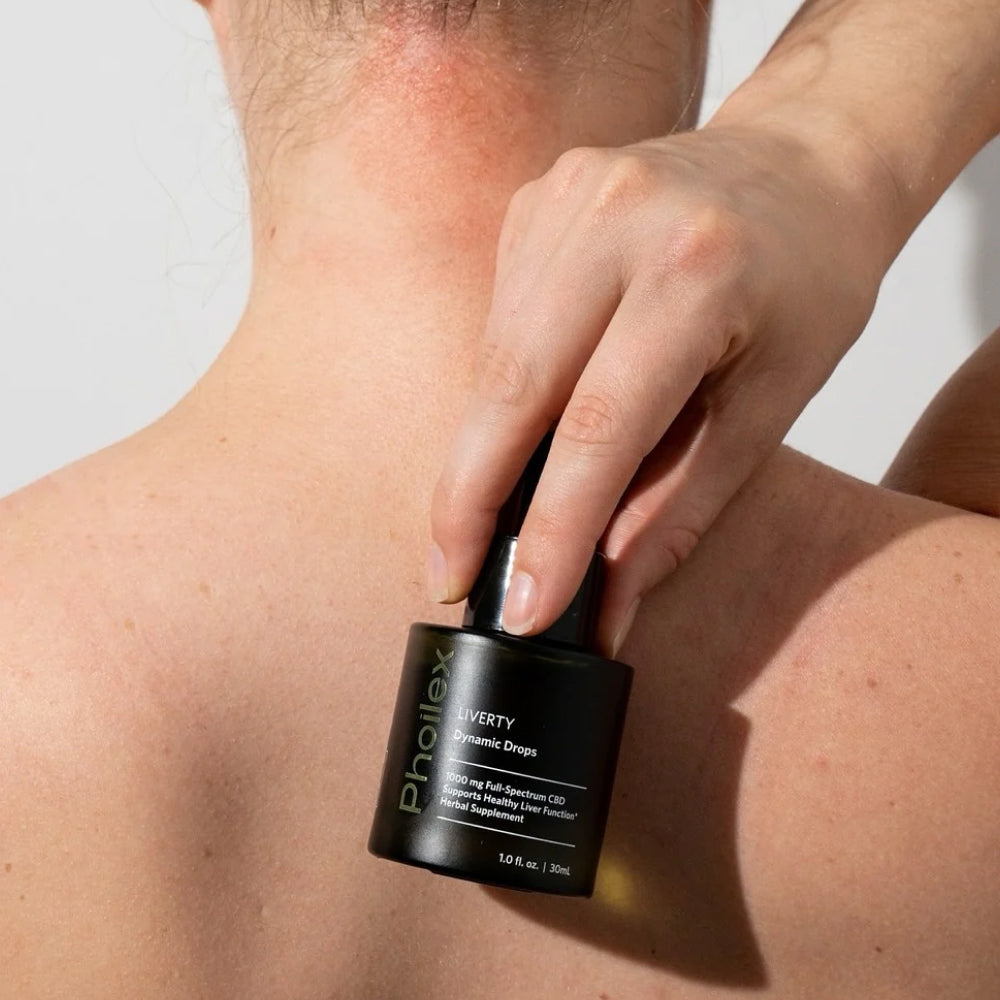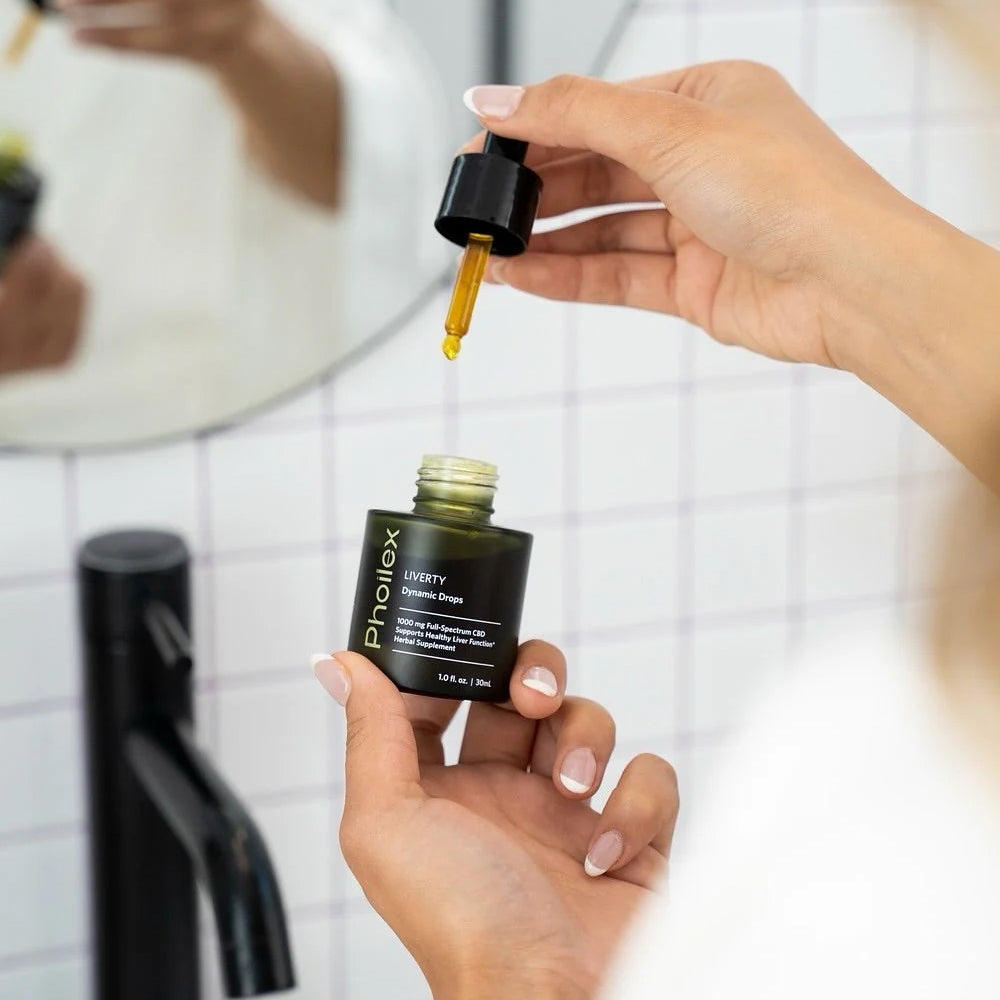Tretinoin is a widely used medication to reduce wrinkles, treat acne, and promote skin renewal. However, some people wonder, “Can tretinoin cause topical steroid withdrawal (TSW)?” This might derive from the confusion in similar skin reactions (redness or peeling) between topical steroid withdrawal and retinoid irritation.
Today, our blog will examine whether tretinoin causes TSW and help you differentiate tretinoin-related irritation and TSW. This post examines their relationship, helps identify key differences between normal tretinoin reactions and TSW, and discusses valuable treatments to improve your topical steroid withdrawal.
What Is Topical Steroid Withdrawal?
According to the National Library of Medicine, topical steroid withdrawal (TSW) is a harmful condition related to stopping topical steroids after prolonged use on the skin. In fact, topical steroids are medications used to control skin conditions like psoriasis and eczema. However, they might lead to risks for skin health.
Here are several symptoms and causes of topical steroid withdrawal that you should consider when starting any steroid-related treatments.
Symptoms
While topical steroid withdrawal often features painful skin and erythema (the superficial reddening of the skin, usually in patches), it also relates to other signs, such as:
- Redness (red face syndrome and red sleeve sign)
- Edema (swelling caused by excess fluid trapped in the body's tissues)
- Paresthesia (An abnormal skin sensation like tingling, pricking, chilling, burning, or numbness without a clear cause; it may be temporary or chronic and can occur anywhere on the body.)
- Steroid-induced dermatitis;
- Atrophic changes (wrinkling and skin thinning);
- The peeling of skin layers or desquamation;
- Stress, anxiety, and depression;
- Overwhelming fatigue and alopecia.
You can see that TSW relates to clinical symptoms and systemic signs. This can damage your immune system and lead to an imbalance in your overall health.
Causes
Tretinoin is a topical retinoid derived from vitamin A. According to the Mayo Clinic, “it works partly by keeping skin pores clear and greatly improves more obvious in the skin.” Therefore, you can use it as an appealing medication to treat acne and strengthen skin texture.
What is Tretinoin?
Currently, Tretinoin is a scientific name for a medicine derived from vitamin A (retinol), also known as all-trans retinoic acid (ATRA). When looking for tretinoin-containing products, check the ingredient lists for terms like ATRA, retinoids, or the generic name 'tretinoin.'
Can Tretinoin Cause Topical Steroid Withdrawal?
The answer to “Can tretinoin cause topical steroid withdrawal” is apparently no. Tretinoin is a retinoid, not a steroid. Thus, it cannot lead to topical steroid withdrawal. Tretinoin is helpful for acne and skin aging, and it works differently from steroids.
When tretinoin works on your skin, it can cause tretinoin-induced irritation. It is a temporary phase that your skin is familiar with to faster cell turnover in the body, featuring typical signs like redness and peeling. By contrast, topical steroid withdrawal occurs when some stop steroids after prolonged use.
Potential Benefits Of Tretinoin Post-TSW
The study Tretinoin: A Review of Its Anti-inflammatory Properties in the Treatment of Acne mentioned, “Tretinoin has been primarily used for the early stages of acne because of its proven comedolytic end benefits.” Additionally, it offers numerous benefits for your health, such as:
- Preventing follicular plugging and exfoliating the skin;
- Supporting collagen production and improving skin texture;
- Reducing the appearance of fine lines and wrinkles on the skin;
- Improving the appearance of sun-damaged areas of skin;
Common Side Effects
Although the answer to “Can tretinoin cause topical steroid withdrawal?” is no, tretinoin has unwanted effects. Here are several side effects to consider when using tretinoin on your skin.
- Burning, scaling and itching;
- Excessive redness of skin;
- Dryness, irritation, and peeling;
- Changes in skin pigmentation.
Some side effects are not severe and may go away during treatment. Despite that, it would be hazardous to confuse these symptoms with more severe skin disorders without medical attention.
Caution And Professional Guidance
It is best to seek the support of your healthcare professional to ensure that tretinoin is working correctly on the skin and to prevent unexpected skin irritation.
Before applying tretinoin, wash the skin with warm water and let it dry completely (about 20-30 minutes). Then, gently rub enough tretinoin on the skin and let the skin heal at least 1 hour. Besides that, it’s important to note:
- Don’t use tretinoin on sunburned, windburned skin or open wounds;
- Don’t use tretinoin around the lips, eyes, or inside of the nose;
- Remove tretinoin on hands as soon as you have completed applying tretinoin
Commonly, during the first three weeks of tretinoin use, your skin might be irritated. Thus, to prevent potential infection, you should avoid overexposure to wind, sunlight, cold weather, or any easy-allergic skin products. Significant improvements take at least 12 weeks to see.
Are There Any Alternative Ways To Topical Steroid Treatment?
There are several alternatives to topical steroid treatments, especially for conditions like eczema and psoriasis. Here are some options:
- Crisaborole (Eucrisa): This is a non-steroidal ointment that can reduce inflammation and is used for mild to moderate eczema.
- Moisturizers and Emollients: Help manage symptoms by keeping the skin hydrated and reducing itchiness.
- Phototherapy: involves exposing the skin to controlled amounts of natural or artificial light, which is effective for chronic skin conditions.
- Biologics: are advanced medications related to the immune system, usually prescribed for severe cases of eczema and psoriasis.
It’s essential to consult with a healthcare professional to determine the best treatment for your condition.
Currently, Phoilex’s skin products don’t contain steroids and mainly possess anti-inflammatory and hydrating nature-derived properties. They can help relieve symptoms of rash-prone skin without severe side effects. In particular:
- Active ReLeaf Spot Gel: is based on a unique, botanical formulation, including our Phyto-Active Blend™, Vitamin D3, and other herbal ingredients. These ingredients can offer numerous vitamins and antioxidants, essential to reduce irritation, increase moisturization, and eliminate rough skin.
- Liverty Dynamic Drops: A blend of natural ingredients formulated to support skin health. These drops may be taken in the morning, evening, or throughout the day. The botanically-derived formula contains ingredients that may help support the skin barrier, provide essential nutrients, and promote stress management for overall skin health.
Final Thoughts
Our blog has provided comprehensive evaluations to help answer the question, “Can tretinoin cause topical steroid withdrawal?” Although tretinoin can cause temporary irritation, it does not contribute to topical steroid withdrawal.
learn more about how to treat chronic skin conditions with Phoilex and discover our range of steroid-free alternatives!
FAQs:
Q: Can tretinoin cause topical steroid withdrawal (TSW)?
A: No, tretinoin cannot cause topical steroid withdrawal because it is a retinoid derived from vitamin A, not a steroid. TSW only occurs from prolonged use and subsequent discontinuation of topical corticosteroids. The confusion often arises because both conditions can cause similar skin reactions like redness and peeling, but they have completely different underlying causes.
Q: What is the main difference between tretinoin irritation and topical steroid withdrawal?
A: Tretinoin irritation is a temporary adjustment period that occurs when starting retinoid treatment, typically causing mild redness, dryness, and peeling that improves with continued use. Topical steroid withdrawal, on the other hand, is a severe reaction that occurs after stopping long-term topical steroid use, featuring intense symptoms like burning, edema, severe erythema, and systemic effects including anxiety and fatigue. TSW symptoms are generally more severe and persistent than typical tretinoin adjustment reactions.
Q: What are the most common symptoms of topical steroid withdrawal?
A: The most common symptoms of TSW include painful skin with superficial reddening (erythema), red face syndrome, swelling (edema), skin peeling or desquamation, and skin thinning. Additional symptoms can include paresthesia (abnormal sensations like tingling or burning), steroid-induced dermatitis, and systemic effects such as stress, anxiety, depression, overwhelming fatigue, and even hair loss (alopecia). These symptoms can significantly impact both physical health and immune system function.
Q: How does tretinoin work on the skin and what is it used for?
A: Tretinoin is a topical retinoid derived from vitamin A that works by keeping skin pores clear and promoting skin cell renewal. It is widely used to reduce wrinkles, treat acne, and improve overall skin texture and appearance. The medication helps accelerate skin turnover and prevents clogged pores, making it effective for both anti-aging and acne treatment purposes.
Q: Why do people confuse tretinoin side effects with topical steroid withdrawal?
A: People often confuse tretinoin side effects with TSW because both conditions can produce similar visible skin reactions, particularly redness and peeling. When someone experiences these symptoms while using tretinoin, they may mistakenly attribute them to steroid withdrawal if they've previously used topical steroids. However, tretinoin-related irritation is typically a normal adjustment phase that resolves with proper use, while TSW is a more severe condition requiring different management approaches.
Q: What should I do if I'm experiencing skin reactions while using tretinoin?
A: If you're experiencing skin reactions with tretinoin, first determine whether you have a history of prolonged topical steroid use, as this helps distinguish between normal tretinoin adjustment and potential TSW. Start with a lower concentration of tretinoin, apply it less frequently (every other night initially), and always use a good moisturizer and sunscreen to minimize irritation. If symptoms are severe, persistent, or accompanied by systemic effects like fatigue or anxiety, consult a healthcare provider to rule out topical steroid withdrawal or other complications.
References:
- Mohta, A., & Sathe, N. C. (2024). Topical Steroid Withdrawal (Red Skin Syndrome). PubMed; StatPearls Publishing. https://www.ncbi.nlm.nih.gov/books/NBK603718/
- Ballard, A. (2021, March 22). TSW: What the eczema community needs to know. National Eczema Association. https://nationaleczema.org/blog/tsw-need-to-know/
- Tretinoin (Topical Route) Proper Use - Mayo Clinic. (2024). Mayoclinic.org. https://www.mayoclinic.org/drugs-supplements/tretinoin-topical-route/proper-use/drg-20066521?p=1#:~:text=Wait 20 to 30 minutes
- Schmidt, N., & Gans, E. H. (2011). Tretinoin: A Review of Its Anti-inflammatory Properties in the Treatment of Acne. The Journal of Clinical and Aesthetic Dermatology, 4(11), 22–29. https://www.ncbi.nlm.nih.gov/pmc/articles/PMC3225141/
Read more

Imagine living with eczema and experiencing unpredictable flare-ups in your home. You do a whole house inspection but do not realize mold could be a common irritant. That is how mold is often an ov...

Eczema is one of the most common skin conditions in infants, often appearing as dry, red, itchy patches on the cheeks, arms, legs, or folds of the skin. Because a baby’s skin barrier is still devel...
